What is a verb? – 16 of the best primary grammar worksheets and resources for KS1 and KS2 English
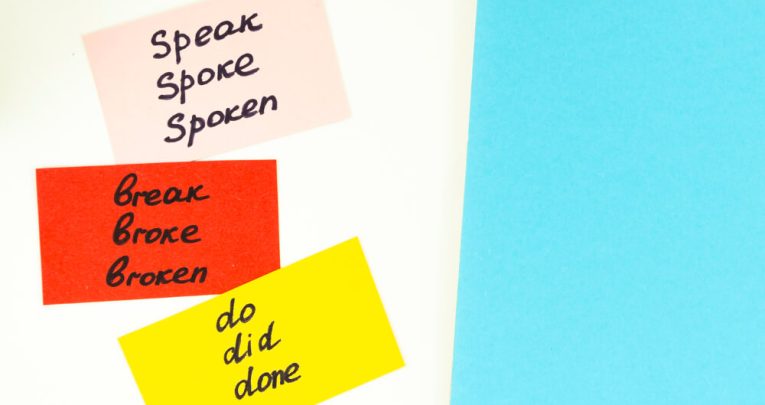
It's not quite as simple as 'doing words', but these activities for Years 1 through Year 6 will have children learning all about the different types of verbs and how and when to use them…

- by Teachwire
- Classroom expertise and free resources for teachers

What is a verb?
The English programme of study says:
The surest way to identify verbs is by the ways they can be used: they can usually have a tense, either present or past.
Verbs are sometimes called ‘doing words’ because many verbs name an action that someone does; while this can be a way of recognising verbs, it doesn’t distinguish verbs from nouns (which can also name actions). Moreover many verbs name states or feelings rather than actions.
It also explains that verbs can be classified in various ways:
- as auxiliary, or modal
- as transitive or intransitive
- and as states or events
Verb examples
- He lives in Birmingham. [present tense]
- The teacher wrote a song for the class. [past tense]
- He likes chocolate. [present tense; not an action]
- He knew my father. [past tense; not an action]
Year 1 verbs
What Year 1 students need to learn
- Suffixes that can be added to verbs where no change is needed in the spelling of root words (eg helping, helped, helper)
- How the prefix un– changes the meaning of verbs and adjectives [negation, for example, unkind, or undoing: untie the boat]
1 | ‘What is a verb?’ quiz
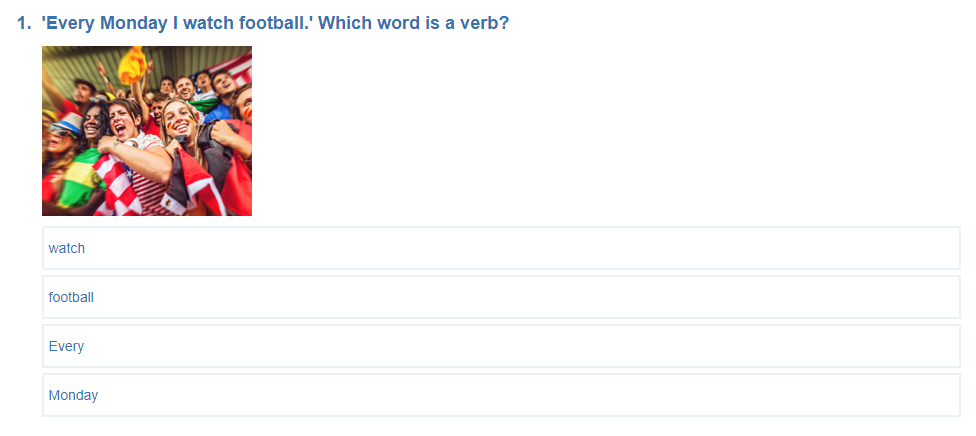
This simple 10-question multiple-choice quiz asks children to spot which of the four answers is a verb, or which isn’t a verb, or which word in a sentence is the verb and so on.
2 | Y1 spelling workout: suffix -ing
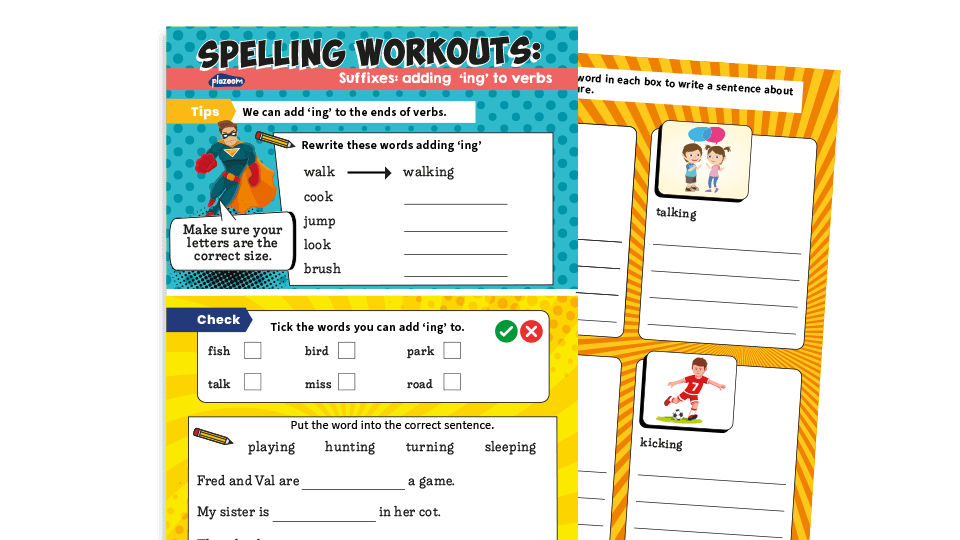
These verb worksheets for Year 1, covering adding -ing to verbs, are an excellent way for children to revise and practise this spelling pattern.
The worksheets include different activities in which children look at spelling patterns, identify misspelt words and apply their spellings in context. They can be used within lessons, as an assessment or as a homework task.
3 | Adding ‘er’ to verbs
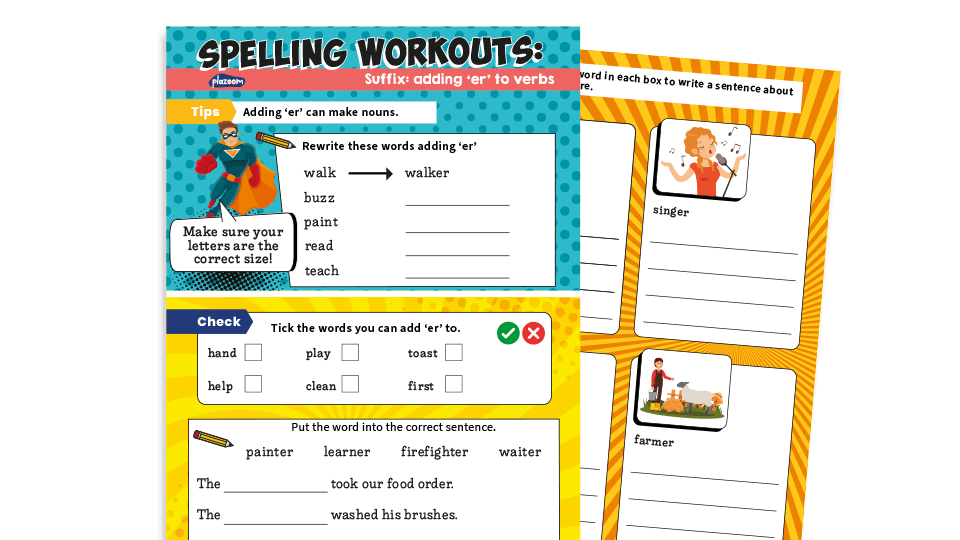
These worksheets are made in the same mould, but this time they cover adding ‘er’ to verbs.
Year 2 verbs
What Year 2 students need to learn
Use of the progressive form of verbs in the present and past tense to mark actions in progress [for example, she is drumming, he was shouting]
4 | Year 2 verbs
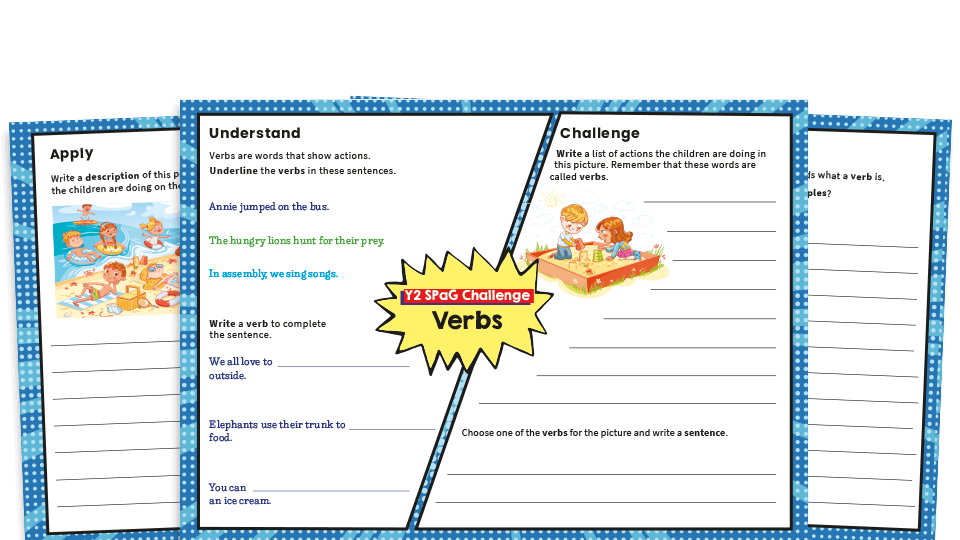
This bright, appealing grammar worksheet is an excellent way to practise and revise using verbs in Year 2. It is divided into five sections: understand, challenge, test, explain and apply.
Activities include SATs-style questions and opportunities for creative writing responses, with eye-catching images as prompts.
5 | Past simple or past progressive worksheet
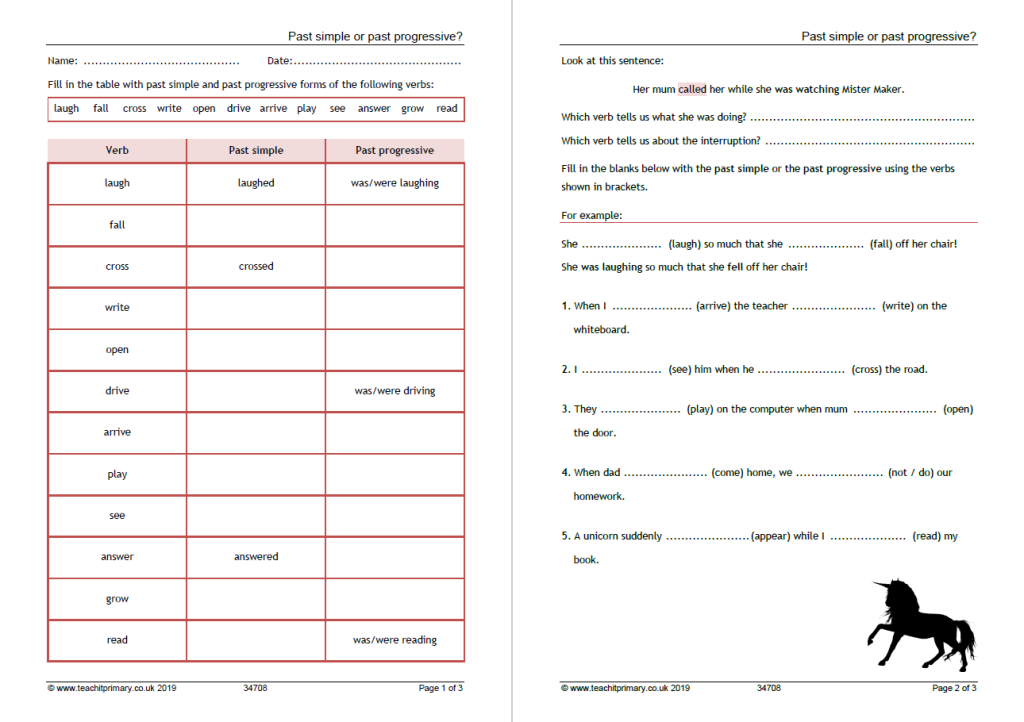
This worksheet helps children consolidate understanding of the meaning, form and function of the past simple and past progressive tenses. Answers are included.
6 | Irregular verb tenses
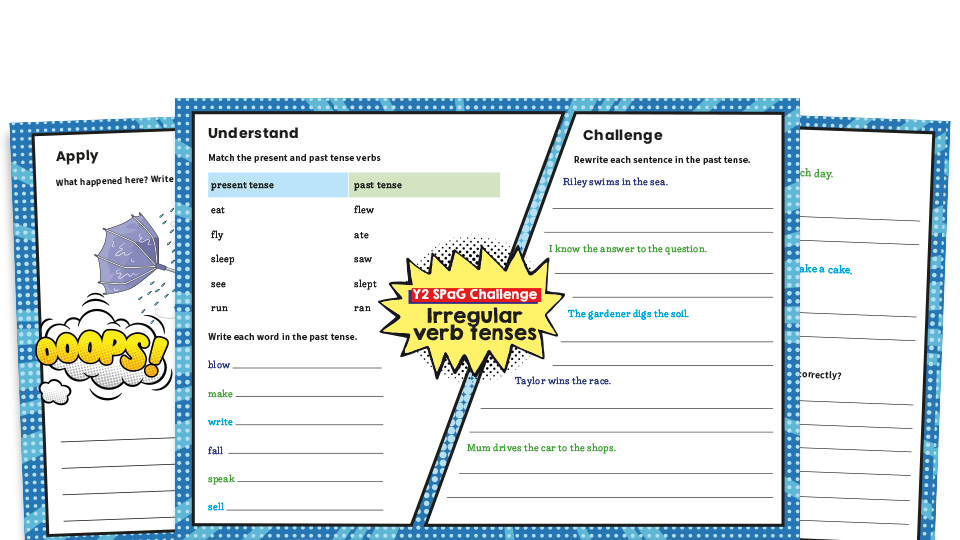
This grammar worksheet helps students to practise and revise using the suffixes -ly, -ful, -less, -ness and -ment in Year 2, through SATs-style questions with opportunities for creative writing responses.
7 | adding ‘ed’ to verbs
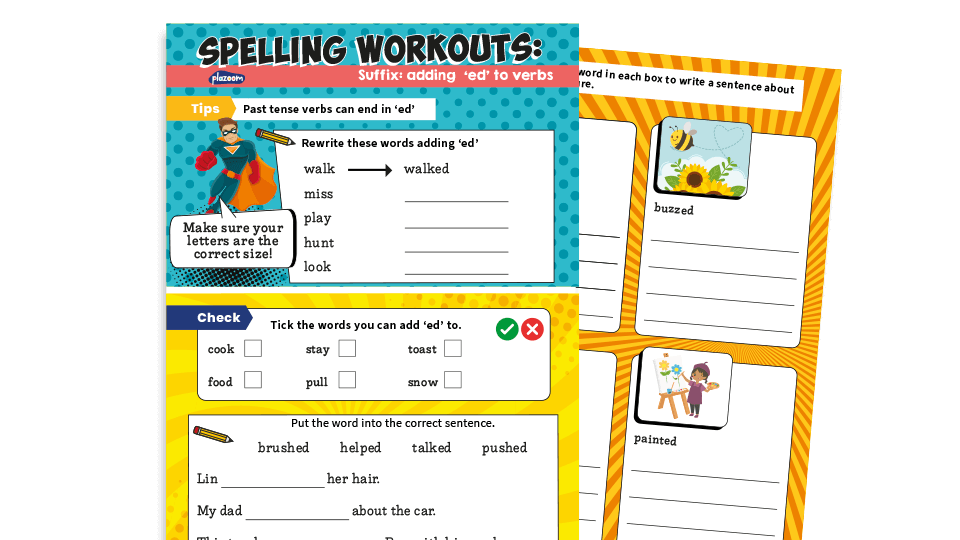
Help children revise and practise the spelling pattern of adding ‘ed’ to verbs, with activities looking at spelling patterns, identifying misspelt words and applying their spellings in context.
You’ll find this resource here.
Year 3 verbs
What Year 3 students need to learn
Use of the present perfect form of verbs instead of the simple past [for example, He has gone out to play contrasted with He went out to play]
8 | Verb tenses worksheets
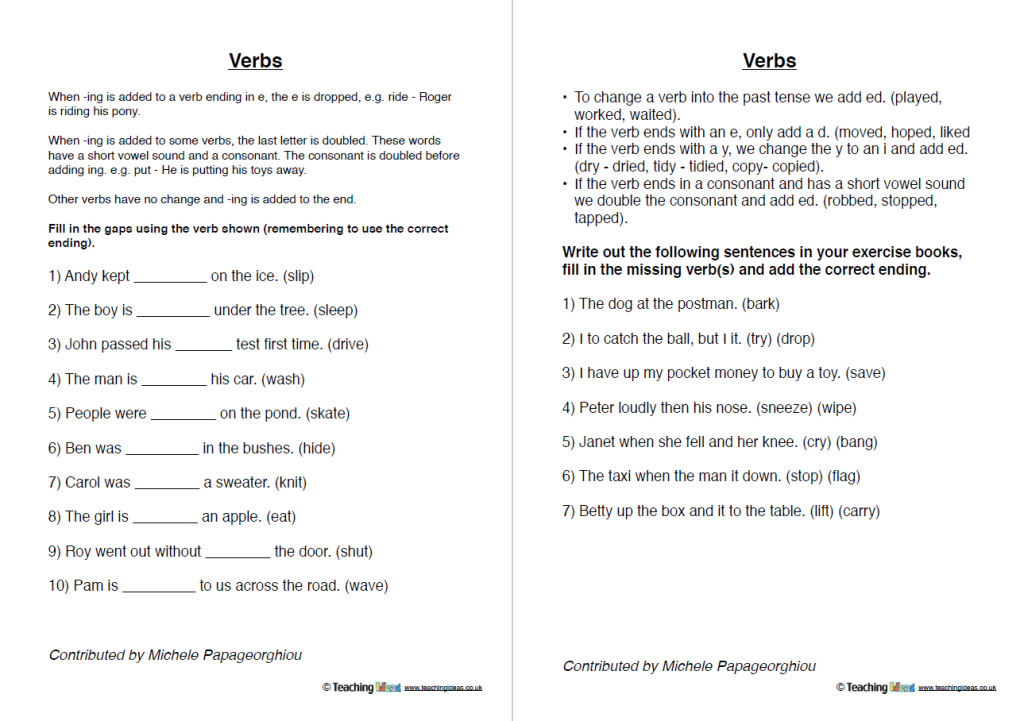
The first worksheet deals with how to change the spellings of verbs when adding “ing” to the end. Instructions are given at the top of the sheet, and children have to fill in the blank spaces using the correct verbs (with the correct spellings).
Trending
The second worksheet explains how to change verbs into the past tense, with spelling rules given at the top, and children need to insert the correct verbs into the sentences.
There are no blank spaces on this worksheet, so children have to decide where to insert the verb, or verbs, into each sentence.
9 | Powerful verbs worksheets
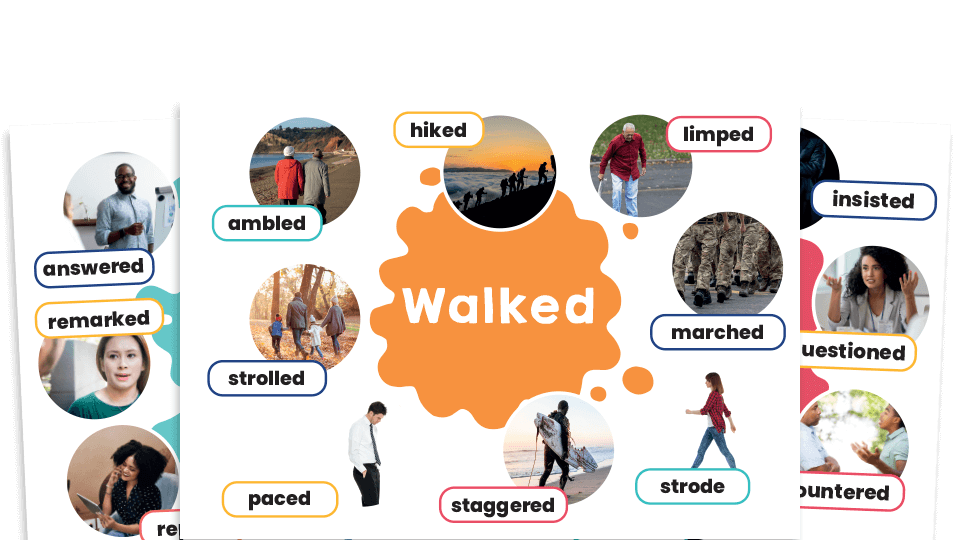
These Year 3 worksheets all help lower-KS2 students develop their use of powerful verbs and expand their vocabulary.
Click the links to check out each one:
- Powerful verb synonym posters
- Ordering powerful verbs activities
- Grammar burst powerful verbs five lesson pack
- Powerful verbs writing features
- Powerful verb synonyms tarsia puzzle
- Powerful verb synonyms spinners
Year 4 verbs
10 | Verb tense snap card game
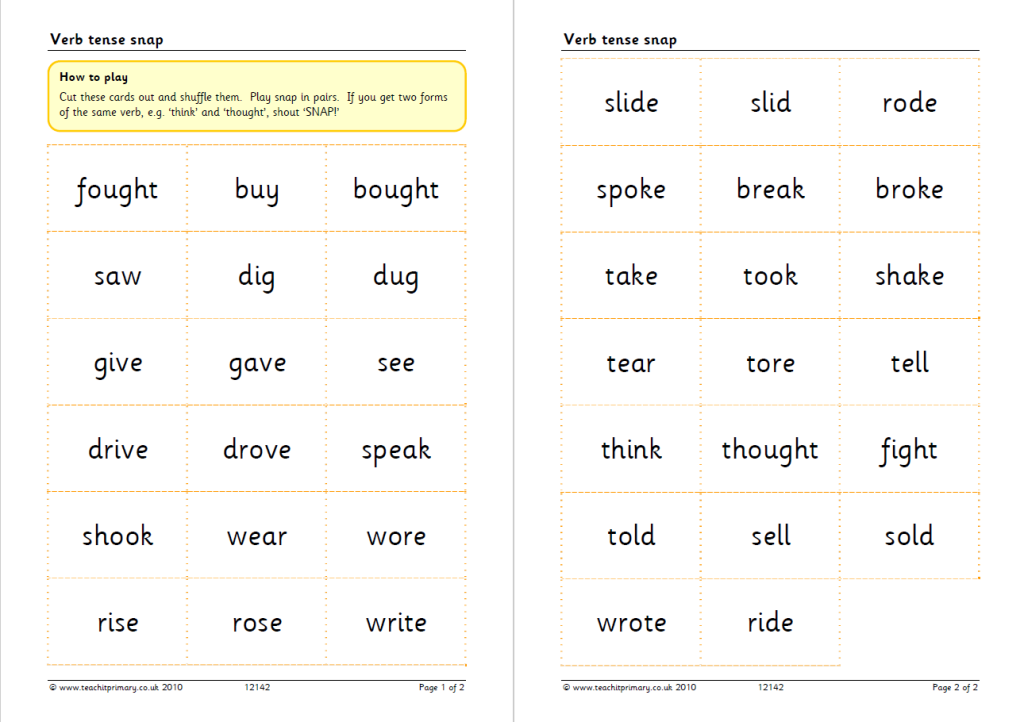
This simple card game is based on the classic Snap. Print and cut out the cards and children then call out snap whenever they have the same verb but in a different tense, eg ‘think’ and ‘thought’.
11 | Verb inflections (was/were)
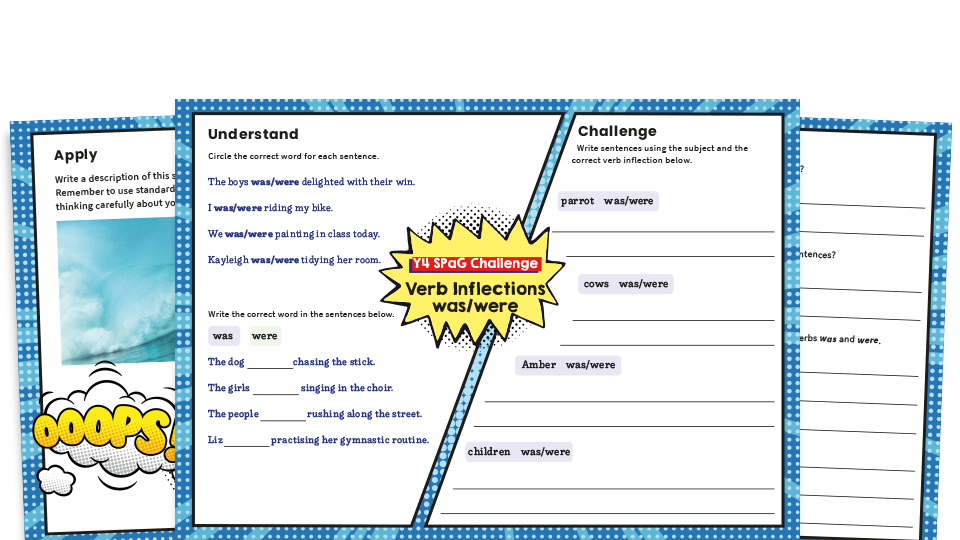
This grammar worksheet looks at the verb inflections was/were in Year 4 with SATs-style questions over five sections.
Year 5 verbs
What Year 5 students need to learn
- Converting nouns or adjectives into verbs using suffixes [for example, –ate; –ise; –ify]
- Verb prefixes [for example, dis–, de–, mis–, over– and re–]
- Indicating degrees of possibility using adverbs [for example, perhaps, surely] or modal verbs [for example, might, should, will, must]
12 | Modal verbs
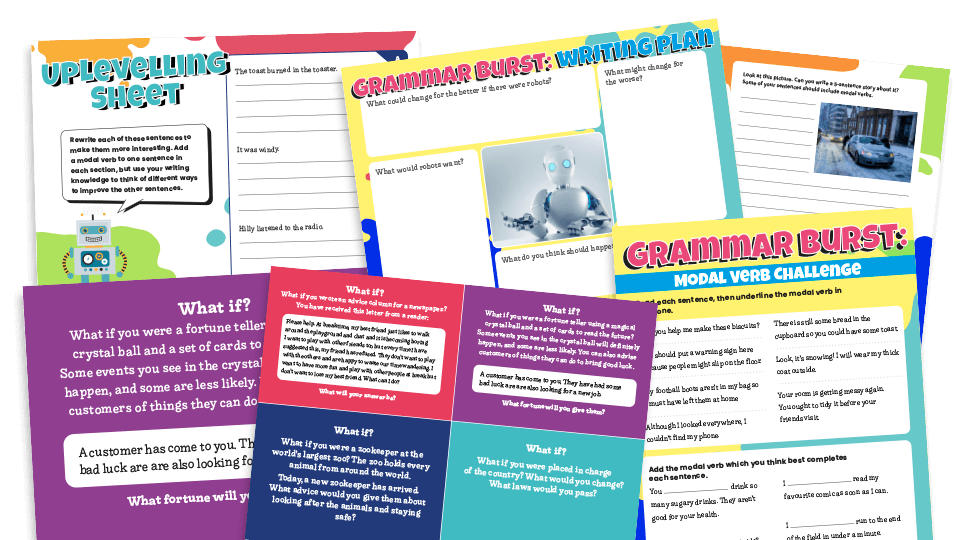
This powerful KS2 grammar resources pack provides everything you need to teach a series of five lessons on modal verbs, culminating in an extended writing task where children can use their grammatical understanding in context.
13 | Modal verb SPaG challenge

This 15-minute SPaG challenge focusing on modal verbs asks students to put words – ‘might’, ‘can’, ‘can’t’, ‘will’, ‘must’, ‘won’t’ – in order from most to least likely, put modal verbs into the blank spaces in sentences and other similar SATs-style questions.
14 | Modal verbs story starters

This teaching sequence has been designed to help children revisit and recall a key grammatical concept from the National Curriculum programme of study for Year 5.
The session provides a motivating and memorable image to stimulate discussion, before introducing the grammar element, which is ‘modal verbs’.
Children have time to practise using this feature, before undertaking a short writing task to apply what they have learnt in the context of creative writing.
15 | Verb Suffixes

Another 15-minute SPaG challenge, this grammar worksheet helps Year 5 students practise using verb suffixes with questions like adding ‘-ate’, ‘-ify’ or ‘-ise’ to a list of nouns and adjectives, and adding one of these suffixes to the root words ‘advert’ and ‘note’ to write a sentence for each.
Year 6 verbs
16 | Modal verbs
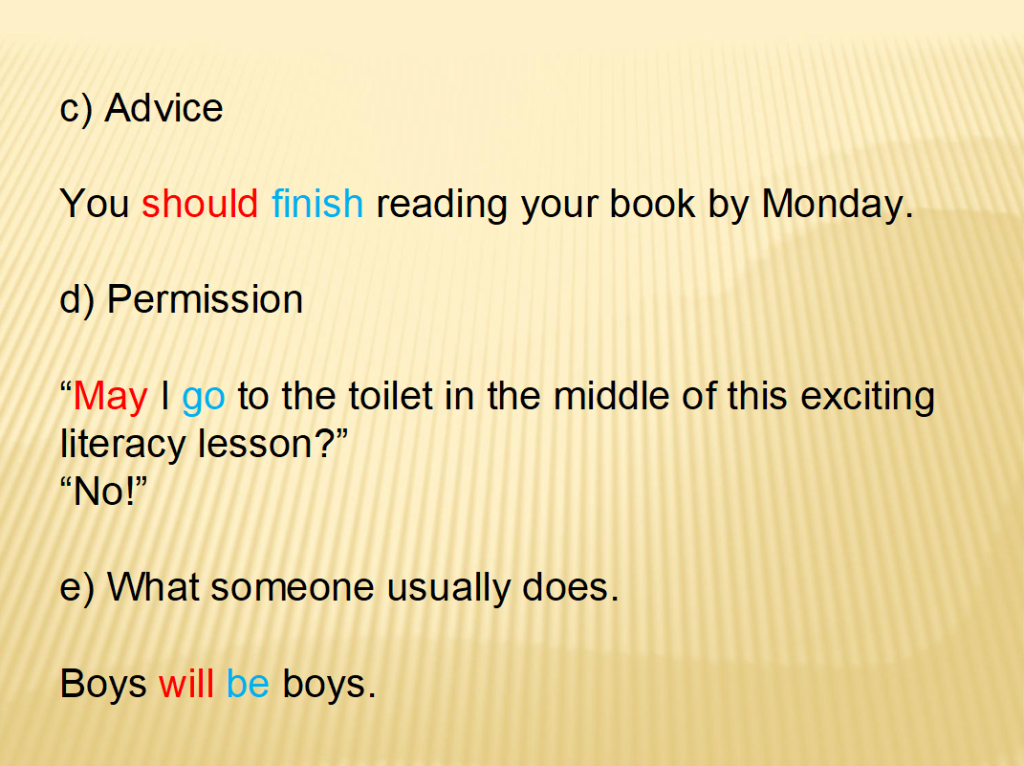
Want to explain modal verbs to your students? This nicely laid-out PowerPoint will help you do just that.
There are 13 slides of examples, explanations and questions.










